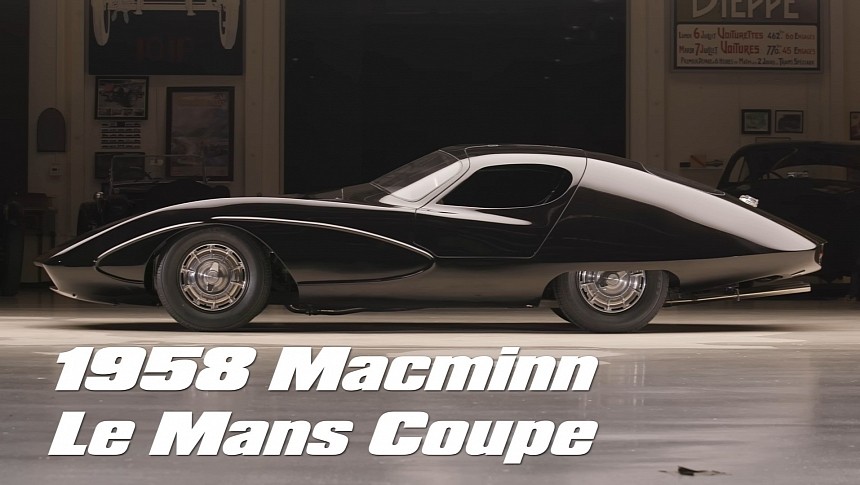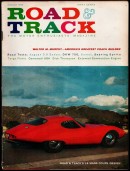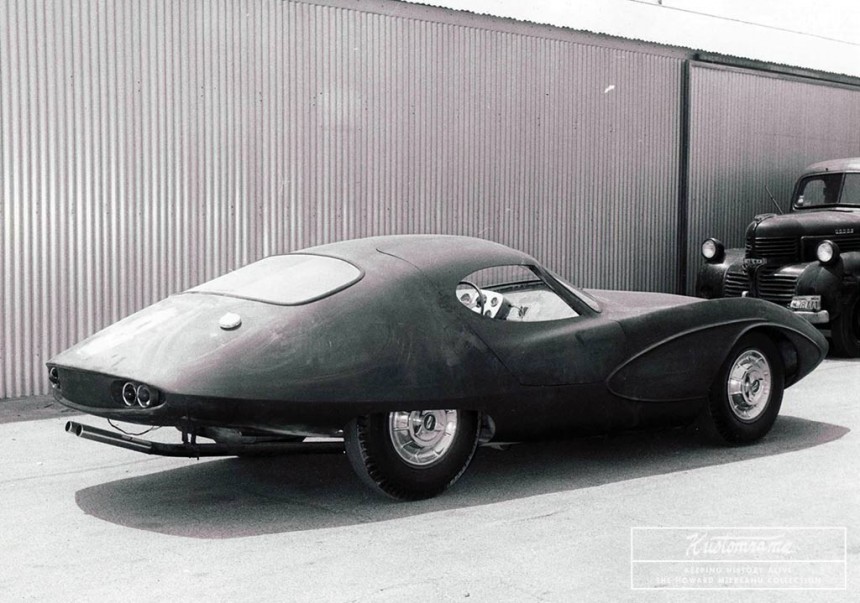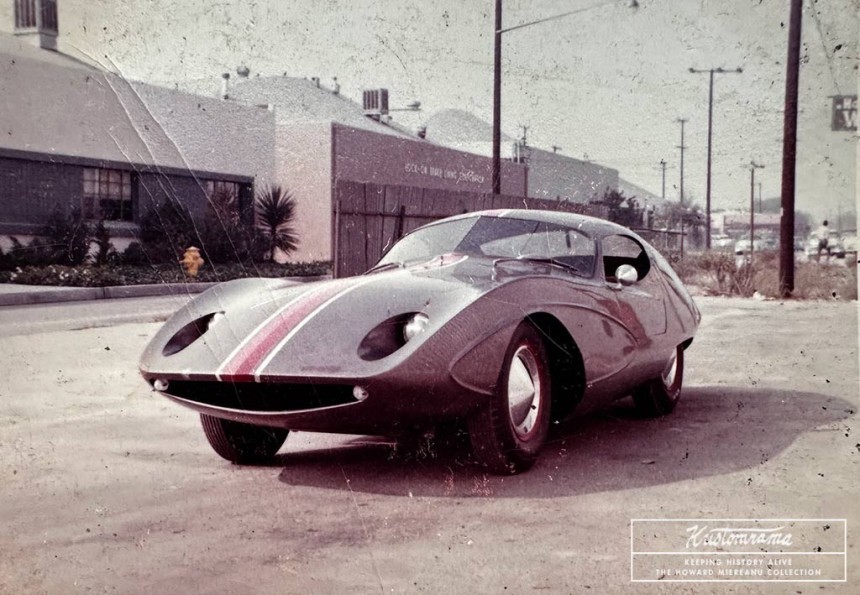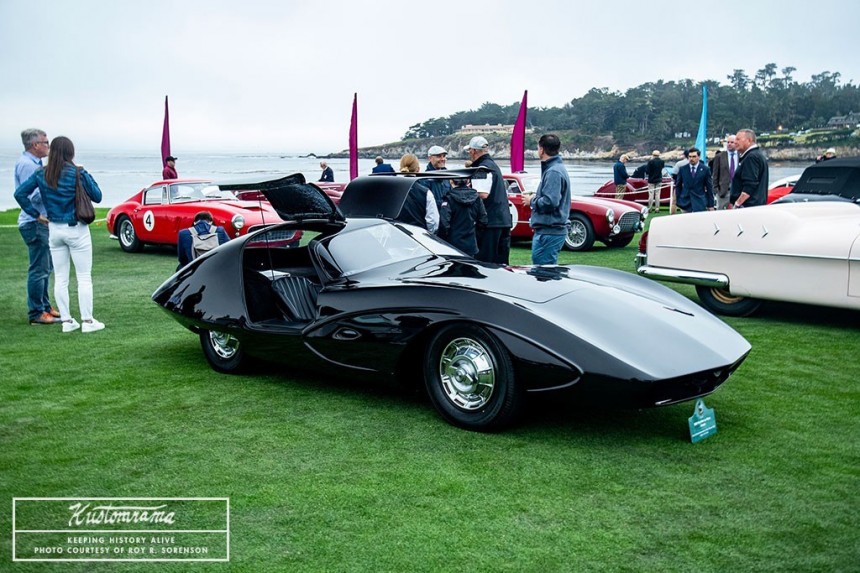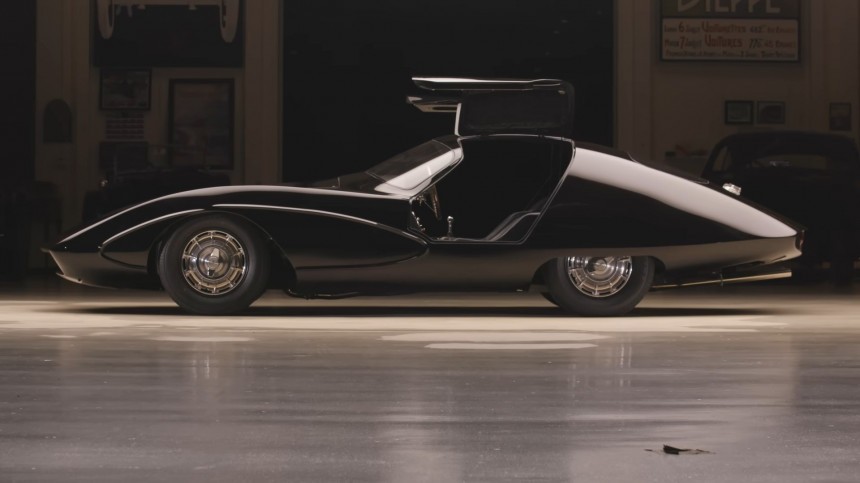The legend of Ford and its GT40 triumph at the 24 Hours of Le Mans is the culminating point in the history of America’s best overseas motorsport efforts. But the lesser-known truth is that Carroll Shelby didn’t spearhead the first American win on the famed French circuit because that took place a year and a half before the Texan racer would be born. And that event ultimately triggered the creation of one of the most stunning American sportscars of the 50s (and it’s not the Corvette).
Jimmy Murphy was a shooting star across the star-riddled skies of motoring glory: by the age of 30, he had won the American Racing Championship two times, in 1922 and 1924, scored first place at the Indy 500, and a Le Mans victory in 1921.
I know it can be a bit confusing, but we celebrated 100 years since the famous endurance race was first run last year. The 1923 event was the first 24-hour race, but the French Grand Prix had been held since 1906 (except during the First World War and the years immediately after).
In fact, 1921 saw the first run of the race following WWI, and James Anthony Murphy from California, U.S.A., and his Duesenberg became the first All-American car-driver duo to win a Grand Prix. The 325-mile (523-kilometer) race was over 247 minutes after the start signal, one-quarter of the duration of the emblematic endurance run that was to become.
After the reputed 24-hour race became the Everest of motoring, but before Carroll Shelby claimed his win in 1959, America didn’t abandon the dream of a second triumph in the famous event. In the late-50s, Road and Track even launched a nationwide challenge to all gearheads to team up and build a car that could win at Le Mans. It should have been, by all means and purposes, the genuine America’s Sportscar – a conjured effort of infinite ambitions, limited money, and intelligent engineering.
John Bond, the magazine's publisher, was also a designer and engineer, so he knew what he was asking for. Eventually, his efforts were successful – enthusiasts signed up for the job and devised various proposals. Bond penned the chassis, and Strother MacMinn designed the body – a shape so futuristic it is right at home in 2024, despite being 66 years fresh.
The car became known as the 1958 MacMinn Le Mans Coupe, and only seven bodies were produced, and three running cars ever saw the road. Sadly, none would compete at Le Mans, and even more heartbreaking, none of those still exist today. However, out of the remaining shells, a small group of hardcore car nuts saved one and built a fully functional automobile that’s as true to the original design as sensibly possible.
The finished cars – built independently by three gearheads - consisted of a super-thin fiberglass body on a steel frame and a stock Chevrolet 283 V8 under the hood. At the same time, the remaining parts were sourced from various other producers. For example, one of the trio had a Chevy gearbox, Mercedes 3.50 rear end, Ford steering, front suspension and brakes, Lincoln rear brakes, and Monroe shocks.
Of those lightweight shells produced, one ended up in a field in California, where it sat for over six decades before a New Jersey car nut found it and decided to give it the life it should have received back in the 60s. In 2021, Dennis Kazmerowski (a former racer himself) initiated the project – with a significant amount of help from a small group of like-minded friends.
What came out of their efforts is showcased by Jay Leno in an episode of his ‘Jay Leno’s Garage’ show. Play the video below to hear the story in detail and see the car go for its longest drive yet. Last year, the car starring in the YouTube video got a late but well-deserved recognition at the Pebble Beach Concours D’Elegance, where it took first place in the ‘Most Elegant Sports Car’ category.
Unlike the original builds from the late 50s and early sixties – see them in the gallery – the recent example features a slightly different front end. The striking absence of the grille and bumper is made even more apparent by the headlights’ placement inside the front air intake.
The initial design placed the optical blocks in the body in recessed tunnel openings with transparent covers for an undisturbed aerodynamic profile. Macminn based the design of his Le Mans Coupe on the 1937 Talbot-Lago T150-C-22 by Figoni and Falaschi, completely ignoring anything else from then-contemporary America.
The spartan body lines were an offending contradiction to the era’s chrome-clad idolatry for showing off, just as the 90-inch (2.25 meters) wheelbase was. For reference, a Corvette from 1957 sat on a lavish 102-inch (2.60 meters) space between the axles, but it was nowhere near as exciting to look at as this MacMinn Le Mans Coupe. The gullwing doors are a direct copy of Mercedes’ 300SL rocket from the period since they allowed better entrance in the spaceframe chassis.
Of the three finished examples, one became a drag race car, and the other two ended up in pieces. The first one assembled and finished cost its builder (Alton Johnson’s the man’s name) $3,500 and took two years to complete. Coincidence or not, it took Dennis Kazmerowski about the same to finish his car. Granted, he used modern parts on the drivetrain, brakes, steering, and suspension. Still, he tried to stay as close to the initial design as practicable.
The two-door, two-seater sportscar bears faint similarities with the C3 Corvette in both styling, with sleek, fluid lines, and engineering – the fiberglass body has been the ‘Vette’s signature feature since its debut in 1953. However, this recreation of the 50s MacMinn weighs just 2,000 lbs (900 kilograms), over 1,200 lbs (543 kg) less than a 1968 Corvette, and its very low-profile. 39.5 inches (one meter and three millimeters) is the maximum height of the car - over eight inches (200 mm) lower than the aforementioned Chevy sportscar.
I know it can be a bit confusing, but we celebrated 100 years since the famous endurance race was first run last year. The 1923 event was the first 24-hour race, but the French Grand Prix had been held since 1906 (except during the First World War and the years immediately after).
In fact, 1921 saw the first run of the race following WWI, and James Anthony Murphy from California, U.S.A., and his Duesenberg became the first All-American car-driver duo to win a Grand Prix. The 325-mile (523-kilometer) race was over 247 minutes after the start signal, one-quarter of the duration of the emblematic endurance run that was to become.
John Bond, the magazine's publisher, was also a designer and engineer, so he knew what he was asking for. Eventually, his efforts were successful – enthusiasts signed up for the job and devised various proposals. Bond penned the chassis, and Strother MacMinn designed the body – a shape so futuristic it is right at home in 2024, despite being 66 years fresh.
The car became known as the 1958 MacMinn Le Mans Coupe, and only seven bodies were produced, and three running cars ever saw the road. Sadly, none would compete at Le Mans, and even more heartbreaking, none of those still exist today. However, out of the remaining shells, a small group of hardcore car nuts saved one and built a fully functional automobile that’s as true to the original design as sensibly possible.
Of those lightweight shells produced, one ended up in a field in California, where it sat for over six decades before a New Jersey car nut found it and decided to give it the life it should have received back in the 60s. In 2021, Dennis Kazmerowski (a former racer himself) initiated the project – with a significant amount of help from a small group of like-minded friends.
What came out of their efforts is showcased by Jay Leno in an episode of his ‘Jay Leno’s Garage’ show. Play the video below to hear the story in detail and see the car go for its longest drive yet. Last year, the car starring in the YouTube video got a late but well-deserved recognition at the Pebble Beach Concours D’Elegance, where it took first place in the ‘Most Elegant Sports Car’ category.
The initial design placed the optical blocks in the body in recessed tunnel openings with transparent covers for an undisturbed aerodynamic profile. Macminn based the design of his Le Mans Coupe on the 1937 Talbot-Lago T150-C-22 by Figoni and Falaschi, completely ignoring anything else from then-contemporary America.
The spartan body lines were an offending contradiction to the era’s chrome-clad idolatry for showing off, just as the 90-inch (2.25 meters) wheelbase was. For reference, a Corvette from 1957 sat on a lavish 102-inch (2.60 meters) space between the axles, but it was nowhere near as exciting to look at as this MacMinn Le Mans Coupe. The gullwing doors are a direct copy of Mercedes’ 300SL rocket from the period since they allowed better entrance in the spaceframe chassis.
The two-door, two-seater sportscar bears faint similarities with the C3 Corvette in both styling, with sleek, fluid lines, and engineering – the fiberglass body has been the ‘Vette’s signature feature since its debut in 1953. However, this recreation of the 50s MacMinn weighs just 2,000 lbs (900 kilograms), over 1,200 lbs (543 kg) less than a 1968 Corvette, and its very low-profile. 39.5 inches (one meter and three millimeters) is the maximum height of the car - over eight inches (200 mm) lower than the aforementioned Chevy sportscar.
